Well, there are tons of different types of fruits in the world, and out of all of them, some are very popular based on different cultures and demographics.
Fruits are a type of food that comes from plants and trees. They are typically sweet and juicy and contain a variety of vitamins, minerals, and fiber that are essential for good health.
Some fruits, like berries, are high in antioxidants, which help to protect your body from harmful molecules called free radicals.
Additionally, fruits are a great source of natural sugars, which provide energy to help keep you going throughout the day.
There are many different types of fruits, ranging from juicy citrus fruits like oranges and lemons to sweet and delicious berries like strawberries and blueberries.
Some fruits, like bananas and apples, are a staple in many diets, while others, like exotic fruits like passionfruit and dragonfruit, are enjoyed by adventurous eaters.
When it comes to nutrition, each fruit is unique and provides its own set of benefits.
So, let us guide you about 50 different types of fruits, their health benefits, and nutritional facts.
1. Apple
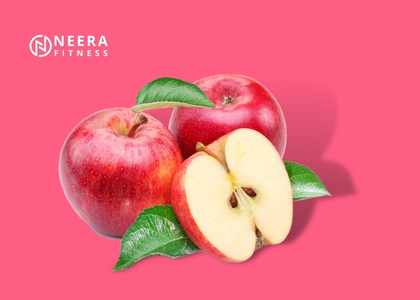
Apple is a type of fruit that comes from the apple tree (Malus Domestica). It is one of the most widely cultivated and consumed fruits in the world.
In terms of origin, apples are thought to have originated in the region that includes Kazakhstan and other parts of Central Asia.
Nutritionally speaking, apples are a great source of vitamins, minerals, and fiber. They are particularly high in vitamin C, which helps to support your immune system, as well as fiber, which is important for digestive health.
Additionally, apples contain a type of antioxidant called polyphenols, which have been shown to have various health benefits, including reducing the risk of chronic diseases like heart disease and certain types of cancer.
In terms of versatility, apples are one of the most versatile fruits out there. They can be eaten raw as a healthy snack, used in cooking and baking to add flavor and natural sweetness, or even made into juice or cider. They are also key ingredients in many classic recipes, such as apple pie and apple sauce. So whether you prefer them sweet or tart, apples are a great fruit to include in your diet!
A medium-sized apple weighing approximately 100 grams provides the following nutrients, minerals, and vitamins (1):
- Calories: 52
- Total Carbohydrates: 14 grams
- Dietary Fiber: 2 grams
- Sugar: 10 grams
- Vitamin C: 8% of the Recommended Daily Value (RDV)
- Vitamin K: 4% of the RDV
- Potassium: 3% of the RDV
- B-complex vitamins (such as riboflavin, thiamin, and B-6): 2-3% of the RDV
- Calcium: 1% of the RDV
- Iron: 1% of the RDV
- Vitamin A: 2% of the RDV
In addition to these nutrients, apples also contain small amounts of other essential vitamins and minerals, making them a well-rounded food choice.
On this note, here is the guide to all the different types of apple varieties for more information and specific nutritional values.
2. Apricot

An Apricot is a small, sweet fruit that is often enjoyed as a healthy snack. It is a type of stone fruit, meaning it has a pit in the center that must be removed before eating. The flesh of the fruit is soft and juicy and has a slightly tart flavor.
Apricots are thought to have originated in China over 3,000 years ago, and they were later brought to Europe by traders. Today, apricots are grown in many countries around the world, including the United States, Spain, and Italy.
A 155-gram serving of fresh apricots provides a good source of nutrients, including vitamins A and C, potassium, and dietary fiber. It also contains smaller amounts of other essential vitamins and minerals, making it a well-rounded food choice.
Apricots can be enjoyed fresh, dried, or canned, and they can be used in a variety of recipes, including baked goods, sauces, and jams. They can also be used in savory dishes, such as poultry and pork, to add a touch of sweetness and nutrition.
A 100-gram serving of apricots contains the following nutrients (2):
- Energy: 48 calories
- Carbohydrates: 11.3 grams, including 9.7 grams of sugar and 1.4 grams of fiber
- Protein: 1.4 grams
- Vitamin A: 22% of the recommended daily intake (RDI)
- Vitamin C: 13% of the RDI
- Vitamin E: 6% of the RDI
- Potassium: 9% of the RDI
- Magnesium: 4% of the RDI
- Calcium: 1% of the RDI
- Iron: 2% of the RDI
It’s worth noting that apricots are a relatively low-calorie fruit, making them a great option for those looking to manage their weight. They are also a good source of fiber, vitamins, and minerals, making them an important part of a balanced and nutritious diet.
3. Avocado

Avocado is a fruit that is high in healthy fats and nutrients. It is often referred to as a superfood due to its numerous health benefits.
It is believed to have originated in Mexico and Central America, where it has been cultivated for thousands of years. Today, it is grown all over the world, from the United States to New Zealand.
It is rich in healthy monounsaturated fats, fiber, potassium, and a range of vitamins and minerals, including vitamin K, vitamin C, vitamin B6, and folate.
Avocado is a highly versatile fruit that can be used in a variety of dishes, from salads and sandwiches to smoothies and dips. It has a creamy texture and a mild, nutty flavor that complements a range of other ingredients.
Here are the nutrition facts of 100 gm of Avocado (3):
- Energy: 160 kcal
- Total Fat: 15 g (23% of Daily Value)
- Saturated Fat: 2 g (10% of Daily Value)
- Total Carbohydrates: 9 g (3% of Daily Value)
- Dietary Fiber: 7 g (29% of Daily Value)
- Total Sugars: 1 g
- Protein: 2 g
- Vitamin C: 10% of Daily Value
- Vitamin K: 26% of Daily Value
- Folate: 20% of Daily Value
- Potassium: 14% of Daily Value
- Magnesium: 6% of Daily Value
- Vitamin B6: 10% of Daily Value
Note: The Daily Value (DV) is based on a daily intake of 2,000 calories.4. Banana
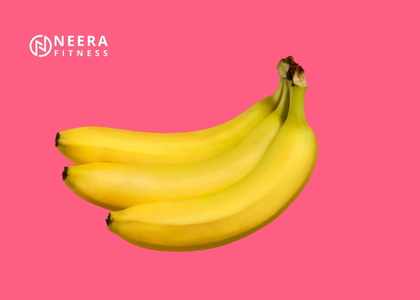
Bananas are sweet, creamy, and versatile fruits that are widely popular across the world. They are cylindrical in shape, come in a yellow or green color, and have soft, edible flesh inside a protective outer layer.
Bananas are believed to have originated in Southeast Asia, specifically in the region of Malaysia and the Philippines. From there, they were brought to Africa and eventually to the Americas through trade and colonization.
Bananas are rich in vitamins, minerals, and fiber. They contain Vitamin C, B6, and potassium. They are also a good source of dietary fiber and carbohydrates, which can provide energy.
Bananas are very versatile fruits and can be consumed in a variety of ways. They can be eaten raw, blended into smoothies, baked into slices of bread, and more.
Nutrition in Banana of 100gm (4):
- Calories: 89
- Carbohydrates: 23g
- Protein: 1.3g
- Fat: 0.3g
- Fiber: 2.6g
- Vitamin C: 8.7mg
- Vitamin B6: 0.5mg
- Potassium: 358mg
5. Blackberries
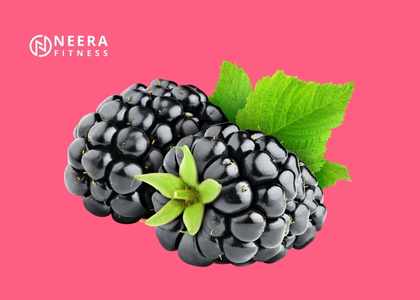
Blackberries are one of the tastiest fruits you can include in your diet.
It is a type of fruit that belongs to the Rubus genus and is native to North America and Europe.
They are characterized by their sweet-tart flavor and juicy texture, making them a popular ingredient in various culinary dishes and snacks.
Blackberries are an excellent source of vitamins and minerals. They are a good source of vitamin C, fiber, and antioxidants, which help to protect the body from harmful free radicals.
Can be used in a variety of ways, from making jams and jellies to adding them to baked goods, and smoothies. They can also be eaten raw, either as a snack or as a topping for cereal, yogurt, or ice cream.
The nutritional value of 100 grams of blackberries includes (5):
- Calories: 43 kcal
- Carbohydrates: 11 grams
- Fiber: 8 grams
- Protein: 2 grams
- Fat: 1 gram
- Vitamin C: 24% of the RDI
- Vitamin K: 36% of the RDI
- Folate: 6% of the RDI
- Manganese: 25% of the RDI
It is important to note, that the nutritional value may vary slightly depending on the variety and ripeness of the blackberries.6. Blackcurrant
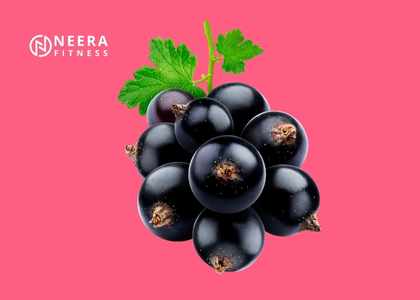
Blackcurrants are a popular fruit that is commonly found in Europe.
With their distinctive sour and tart flavor, blackcurrants are often sweetened before they are consumed.
This unique taste has made them a staple in the culinary world and has led to the creation of various blackcurrant-based products.
From candy and juice to soda and tea, blackcurrants have become one of the most commercially successful types of fruit.
Their versatility and delicious flavor make them a popular choice for both chefs and consumers alike.
Here’s a more complete list of the nutrients found in 100 grams of blackcurrants (6):
- Energy: 63 calories
- Carbohydrates: 16 grams
- Fat: .48 gram
- Protein: 1.4 grams
- Vitamin C: 200% of the recommended daily intake (RDI)
- Vitamin K: 25% of the RDI
- Potassium: 9% of the RDI
- Magnesium: 11% of the RDI
- Copper: 10% of the RDI
7. Blueberries

Blueberries are highly regarded for their claimed health benefits and are widely considered a nutritious fruit.
They are abundant in beneficial polyphenols and provide a good range of vitamins and minerals.
With their deep blue hue, blueberries are also aesthetically appealing.
Positive research findings suggest that blueberries may reduce high blood pressure and enhance cardiovascular health (7, 8).
Additionally, blueberries have a relatively low carbohydrate content, making them one of the best low-carb options among fruits.
The nutritional value of 100 grams of Blueberries includes (9):
- Calories: 57 kcal
- Carbohydrate: 14.5 grams
- Fiber: 2.4 grams
- Sugar: 10 grams
- Fat: 0.3 grams
- Protein: 0.7 grams
- Vitamin K: 24% of the RDI
- Manganese: 17% of the RDI
- Vitamin C: 16% of the RDI
- Vitamin B6: 3% of the RDI
- Vitamin E: 3% of the RDI
8. Boysenberries
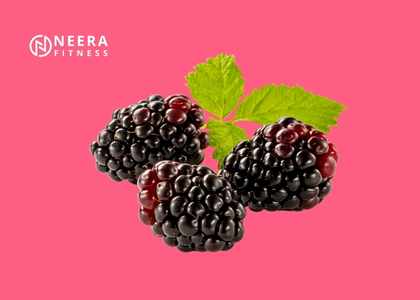
Boysenberries are a hybrid of blackberries, dewberries, loganberries, and raspberries.
One of the standout qualities of this big berry is its juicy and revitalizing nature; boysenberries can grow to a substantial size and consist of approximately 88% water by weight.
In addition to their delicious taste, boysenberries boast a relatively impressive nutritional value.
The nutritional value of 100 grams of Boysenberries includes:
- Calories: 43 kcal
- Carbohydrate: 9.6 grams
- Fiber: 5.3 grams
- Sugar: 4.3 grams
- Fat: 0.5 grams
- Protein: 1.4 grams
- Vitamin C: 35% of the RDI
- Manganese: 32% of the RDI
- Vitamin K: 25% of the RDI
- Copper: 8% of the RDI
- Vitamin E: 7% of the RDI
9. Cherry
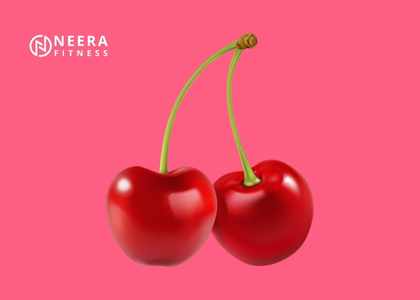
Cherries are a widely popular fruit, belonging to the drupe family, characterized by a hard pit within.
These small fruits have a sweet and juicy flavor and come in two main varieties – sour cherries and sweet cherries.
Although both varieties are similar, sour cherries boast a slightly more nutritious profile.
Sour cherries are primarily cultivated in Russia, Eastern Europe, and Southern Asia, while Turkey and the United States are the largest producers of sweet cherries.
Cherries are seasonal fruit, but frozen cherries are available year-round for those who want to enjoy their taste anytime.
Here is the nutritional value of 100 grams of cherry includes (10):
- Calories: 50 kcal
- Carbohydrate: 12.2 grams
- Fiber: 1.6 grams
- Sugar: 8.5 grams
- Fat: 0.3 grams
- Protein: 1.0 grams
- Vitamin A: 26% of the RDI
- Vitamin C: 17% of the RDI
- Manganese: 6% of the RDI
- Potassium: 5% of the RDI
- Copper: 5% of the RDI
10. Black Chokeberry
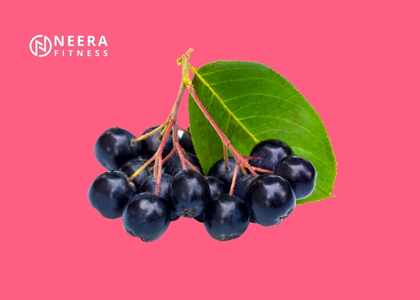
Black chokeberries also referred to as Aronia berries, are a fruit with a distinct flavor that may take some getting used to.
This is because they possess a strong bitter taste, making them one of the most bitter foods available.
Despite their bitter taste, black chokeberries are extremely nutritious and contain a wealth of polyphenols, ranking 7th among all foods in terms of polyphenol content.
To overcome their bitter taste, chokeberries are often incorporated into sweetened foods like jams and juices. There are also chokeberry wines and teas available for those who wish to enjoy their health benefits.
In terms of nutrition, per 100g of chokeberries, the following values can be found (11):
- Calories: 47 kcal
- Carbohydrate: 9.6 grams
- Fiber: 5.3 grams
- Sugar: 4.3 grams
- Fat: 0.5 grams
- Protein: 1.4 grams
- Vitamin C: 35% of the RDI
- Manganese: 32% of the RDI
- Vitamin K: 17% of the RDI
- Iron: 8% of the RDI
- Vitamin E: 8% of the RDI
11. Cranberry
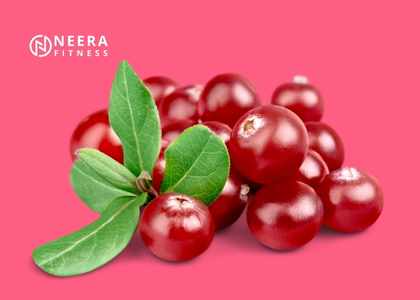
Cranberries are small, bright red berries that are widely consumed and found in many commercial food products such as juices, jams, and jellies.
They are known for their sour taste, so they are often dried and have added sugar. Fresh cranberries can also be found, but they have a very tart flavor.
Like chokeberries, cranberries are rich in phytonutrients, which tend to be bitter or sour in nature.
In terms of nutrition, per 100g of cranberries, they offer a reasonable amount of vitamin C (12):
- Calories: 46 kcal
- Carbohydrate: 12.2 grams
- Fiber: 5 grams
- Sugar: 4.0 grams
- Fat: 0.1 grams
- Protein: 0.4 grams
- Vitamin C: 22% of the RDI
- Manganese: 6% of the RDI
- Vitamin E: 4% of the RDI
- Vitamin K: 4% of the RDI
- Copper: 4% of the RDI
12. Date Palm
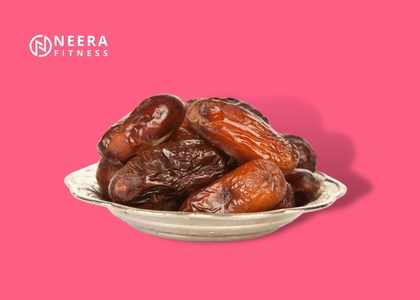
The Date Palm, commonly referred to as just “date,” is a sweet, edible fruit that is believed to have originated from the Middle East.
The date fruit grows on a tree that has a tropical appearance and can produce hundreds of pounds of fruit each year from a single tree.
Both fresh and dried forms of fruit are commonly consumed.
It is important to note that dates are among the sweetest types of fruit and have very high sugar content. The dried form of the fruit is particularly sweet, making it a less suitable option for those following a low-carbohydrate diet.
The following is the nutritional information for four pitted dates (13):
- Calories: 67 kcal
- Carbohydrate: 72 grams
- Fiber: 6.4 grams
- Sugar: 64 grams
- Fat: 0 grams
- Protein: 0.4 grams
- Potassium: 5% of the RDI
- Copper: 4% of the RDI
- Manganese: 4% of the RDI
- Magnesium: 3% of the RDI
- Vitamin B6: 3% of the RDI
13. Durian
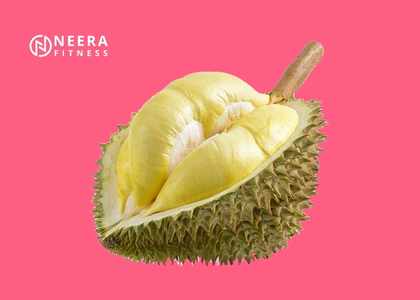
The durian is a large tropical fruit originating from South-East Asia, known for its distinctive odor.
It resembles the jackfruit in appearance but is larger in size.
Durian is commonly used in a variety of dishes, both sweet and savory, in Thai, Malaysian, and Indonesian cuisine.
The scent of the durian is often described as unpleasant, similar to a gym sock. Despite this, the taste is considered sweet, creamy, and nutty by many.
Nutritionally, durian stands out as it is one of the few fruits that contain significant amounts of carbohydrates and fat.
Per 100g, the durian provides (14):
- Calories: 147 kcal
- Carbohydrate: 27.1 grams
- Fiber: 3.8 grams
- Fat: 5.3 grams
- Protein: 1.5 grams
- Vitamin C: 14% of the RDI
- Vitamin B1: 6% of the RDI
- Vitamin B6: 4% of the RDI
- Manganese: 4% of the RDI
- Potassium: 4% of the RDI
14. Elderberry
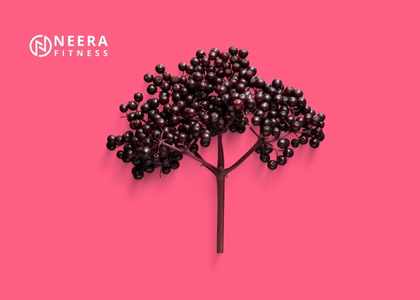
Elderberries are a small, blue-to-black fruit that can be found worldwide.
With their astringent taste, they are often consumed in the form of jams, teas, juices, syrups, and other elderberry products.
These bushes are easily cultivable and yield a substantial amount of berries each year.
Nutritionally wise, elderberries contain high levels of polyphenols and are a good source of Vitamin C.
Here is their nutritional profile per 100g serving (15):
- Calories: 73 kcal
- Carbohydrate: 18.4 grams
- Fiber: 7 grams
- Fat: 0.5 grams
- Protein: 0.7 grams
- Vitamin C: 60% of the RDI
- Vitamin A: 12% of the RDI
- Vitamin B6: 11% of the RDI
- Iron: 9% of the RDI
- Potassium: 8% of the RDI
15. Goji Berries

Goji berries are small, red fruit that is native to China and South-Eastern Europe. They have a long history of use as a medicinal fruit, and goji tea made from dried goji berries is a popular health drink in China.
It is difficult to find fresh goji berries, but dried goji berries have become more popular in the West in recent years.
The unique taste of goji berries is a combination of sweetness, bitterness, chewiness, and deliciousness.
They are also one of the few fruits that provide carbohydrates and protein, with an ounce of dried berries providing around 4g of protein, or 14g per 100g.
Despite their limited availability in fresh form, dried goji berries are becoming increasingly popular due to their unique taste and health benefits.
They are a great addition to any diet and can be used in various recipes, including teas, smoothies, and snacks.
Here is their nutritional profile per 28g serving (16):
- Calories: 98 kcal
- Carbohydrate: 22 grams
- Fiber: 3.6 grams
- Sugar: 13 grams
- Fat: 0.1 grams
- Protein: 4 grams
- Vitamin A: 50% of the RDI
- Copper: 28% of the RDI
- Selenium: 25% of the RDI
- Vitamin B2: 21% of the RDI
- Iron: 14% of the RDI
16. Golden Berries
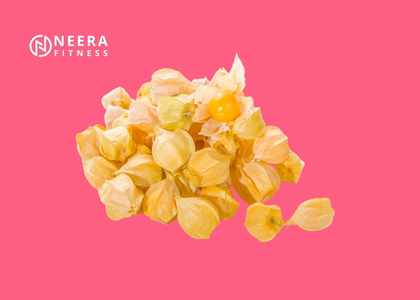
Golden berries, also known as Peruvian groundcherries, are a small, dried fruit that has gained popularity in recent years as a “superfood.” Native to South American countries such as Peru, these berries are often included in healthy eating regimens.
Despite being labeled as a “superfood,” it’s important to keep in mind that these claims should be taken with a grain of salt.
The berries have a sour taste, making them appealing to those who enjoy tart flavors.
In terms of nutrition, Peruvian groundcherries are a good source of Vitamin C, with 100g providing a significant amount of the vitamin (17):
- Calories: 53 kcal
- Carbohydrate: 11.2 grams
- Fat: 0.7 grams
- Protein: 1.9 grams
- Vitamin C: 18% of the RDI
- Vitamin A: 14% of the RDI
- Vitamin B3: 14% of the RDI
- Vitamin B1: 7% of the RDI
- Iron: 6% of the RDI
17. Gooseberries

Gooseberries are a tangy fruit that grows in various regions globally.
These berries have a limited harvest season during the summer, and their shade can vary based on their cultivar and level of ripeness.
They are known for their sour taste and nutrition profile per 100g serving, which includes (18):
- Calories: 44 kcal
- Carbohydrate: 10.18 grams
- Fiber: 4.3 grams
- Sugar: 5.4 grams
- Fat: 0.6 grams
- Protein: 0.9 grams
- Vitamin C: 31% of the RDI
- Manganese: 6% of the RDI
- Vitamin B5: 5% of the RDI
- Vitamin B6: 7% of the RDI
- Potassium: 4% of the RDI
18. Grape
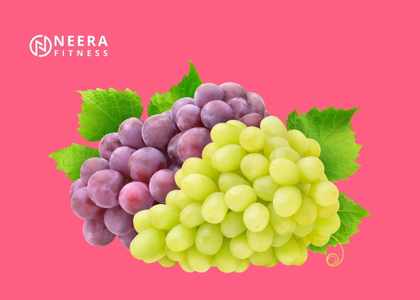
Grapes are a widespread fruit that can be easily found all over the world. They are considered to be versatile and used as key ingredients in various products such as wines, juices, jams, and desserts.
Did you know that grapes are scientifically classified as a type of berry? There are thousands of different grape varieties that come in different colors including white (green), red, purple, or black.
Grapes are believed to have numerous health benefits due to their high polyphenol content. However, it’s important to note that grapes are also one of the fruits with the highest sugar content.
Red wine, which is made from grapes, is often viewed as a healthy drink as it contains concentrated polyphenols and minimal sugar.
In terms of nutrition, 100g of fresh grapes provide the following (19):
- Calories: 69 kcal
- Carbohydrate: 18.1 grams
- Fiber: 0.9 grams
- Sugar: 15.5 grams
- Fat: 0.2 grams
- Protein: 0.7 grams
- Vitamin C: 18% of the RDI
- Vitamin K: 18% of the RDI
- Vitamin B1: 5% of the RDI
- Potassium: 5% of the RDI
- Manganese: 4% of the RDI
19. Grapefruit
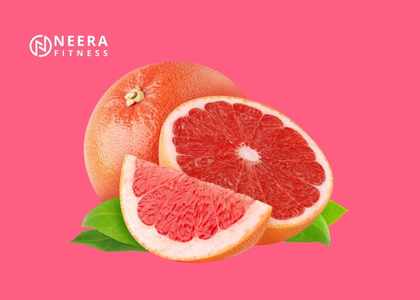
Grapefruit is a distinctive type of citrus fruit with its origin traced back to Asia. It is known for its large size and has a unique flavor that is a blend of bitter, sour, and sweet tastes.
Grapefruit is a hybrid fruit, which is the result of the natural crossing of an orange and a pomelo. This means that it is not a naturally occurring species and is considered to be a unique creation.
Grapefruit is available in different varieties that range in color from white to pink and red. It is also known for its high polyphenol content, particularly flavonoids such as naringinen.
In terms of nutritional value, grapefruit is dominated by vitamin C, and a single serving (230g) provides the following (20):
- Calories: 96 kcal
- Carbohydrate: 24.5 grams
- Fiber: 3.7 grams
- Sugar: 15.8 grams
- Fat: 0.3 grams
- Protein: 1.8 grams
- Vitamin C: 120% of the RDI
- Vitamin A: 53% of the RDI
- Potassium: 9% of the RDI
- Vitamin B1: 7% of the RDI
- Folate: 7% of the RDI
20. Guava
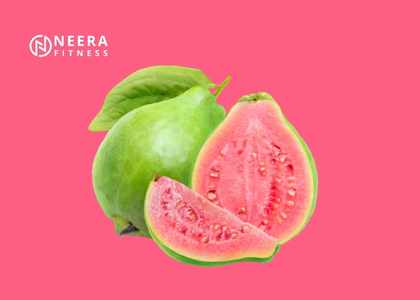
Guava is a tropical fruit that is commonly found in tropical and subtropical regions, such as Mexico and Central and Southern America.
It is known for its unique appearance, which features lime-green skin with a pink fleshy center.
The taste of guava varies depending on its ripeness, with under-ripe guavas having a slightly sour flavor and ripe guavas being sweeter.
Ripe guava can be identified by its light yellow skin, which indicates that it is sweeter than a green one.
Guavas are a great source of vitamin C, with just one small fruit providing 209% of the recommended daily allowance. They are also packed with other essential nutrients, vitamins, and minerals.
Here is a full nutritional breakdown of single guava fruit (21):
- Calories: 37.4 kcal
- Carbohydrate: 7.9 grams
- Fiber: 3.0 grams
- Sugar: 4.9 grams
- Fat: 0.5 grams
- Protein: 1.4 grams
- Vitamin C: 209% of the RDI
- Vitamin A: 7% of the RDI
- Folate: 7% of the RDI
- Potassium: 7% of the RDI
- Copper: 6% of the RDI
21. Jackfruit
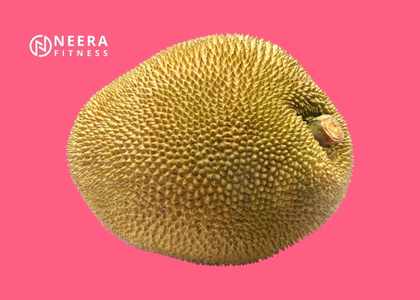
Jackfruit, believed to have originated in India, is a tropical fruit that grows in various parts of the world. It boasts a unique appearance, with its large size resembling that of a giant avocado, and is considered the largest tree fruit in the world. One single fruit can weigh up to 35kg.
Known for its exceptional taste, jackfruit has a soft and sweet flesh of peach color that has drawn comparisons to many flavors, including pineapple, mango, potatoes, and even pulled pork.
Jackfruit’s unique taste and high nutritional value have made it a popular ingredient in many cuisines. It’s often used as a meat substitute in vegetarian and vegan dishes, adding a delicious flavor to curries, salads, smoothies, and more.
A cup of jackfruit offers a range of macro and micronutrients, including (22):
- Calories: 155 kcal
- Carbohydrate: 39.6 grams
- Fiber: 2.6 grams
- Fat: 0.5 grams
- Protein: 2.4 grams
- Vitamin C: 18% of the RDI
- Manganese: 16% of the RDI
- Magnesium: 15% of the RDI
- Copper: 15% of the RDI
- Potassium: 14% of the RDI
22. Jujube
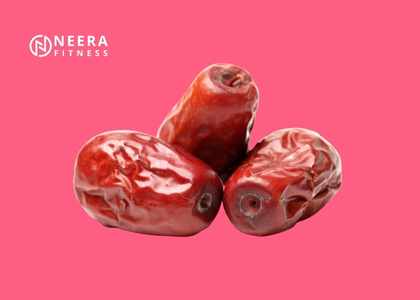
Jujube, also known as a “Chinese date,” has a rich history in China, where it has been cultivated for centuries.
This fruit has played a significant role in traditional Chinese medicine, with people believing it to have powerful properties such as antibacterial, anti-inflammatory, and contraceptive effects.
While some scientific studies (23) have suggested it may be a potential treatment for chronic constipation, further research is needed to fully understand its medicinal properties.
Jujube can be consumed in a variety of forms, including fresh, dried, or processed products such as jujube tea.
With a sweet and juicy flavor when fresh, the sweetness of jujube intensifies when dried, making it a popular ingredient in many recipes.
Here is the nutritional information for 100g of fresh jujube (24):
- Calories: 79 kcal
- Carbohydrate: 20.2 grams
- Fat: 0.2 grams
- Protein: 1.2 grams
- Vitamin C: 115% of the RDI
- Potassium: 7% of the RDI
- Copper: 6% of the RDI
- Vitamin B6: 6% of the RDI
- Manganese: 6% of the RDI
23. Juniper Berries
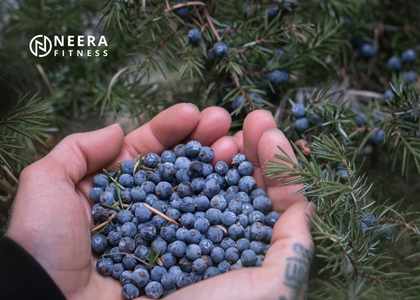
Juniper berries are often referred to as a berry or fruit, but they are not technically either.
They are primarily used as a spice in cooking and contribute to the signature flavor of gin.
Fresh juniper berries resemble blueberries in appearance, but their taste is completely different, bitter, woody, slightly fruity, spicy, and slightly peppery.
These unique flavor profiles make juniper berries a popular ingredient in soups and meat dishes.
However, it’s important to use them sparingly, as only a small amount, around one gram, is needed due to their intense flavor.
The nutritional value of such a small quantity is negligible.
24. Kiwi
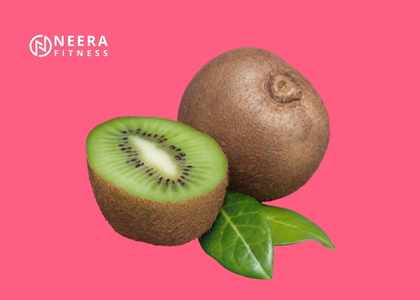
Kiwifruit is a succulent, green, and juicy fruit that is enjoyed by people all over the world. Also known as Chinese gooseberry, it is a highly sought-after type of fruit due to its popularity.
The kiwifruit plant is relatively easy to cultivate, making it readily available in most developed countries.
The taste of kiwifruit is a unique combination of sweetness and slight sourness. The flesh of the fruit is green, dotted with black seeds, and covered by soft, olive-colored, and furry skin.
One of the most notable benefits of kiwifruit is its high vitamin C content. In fact, just one small kiwifruit contains more than the daily recommended amount of vitamin C, making it an excellent choice for those looking to boost their immunity.
Here are the nutritional details for one small kiwi (25):
- Calories: 46.4 kcal
- Carbohydrate: 11.1 grams
- Fiber: 2.3 grams
- Sugar: 6.9 grams
- Fat: 0.5 grams
- Protein: 0.9 grams
- Vitamin C: 117% of the RDI
- Vitamin K: 38% of the RDI
- Potassium: 7% of the RDI
- Vitamin E: 6% of the RDI
- Copper: 4% of the RDI
25. Kumquat

Kumquats are a miniature citrus fruit that is similar in many ways to oranges.
Unlike oranges, they are small enough to be eaten whole and have a unique flavor profile.
The flesh of kumquats is quite tart, while the rind has a sweet taste, resulting in a contrast of sweet and sour flavors.
Originally from South Asia, kumquats are now cultivated all over the world. Like other citrus fruits, kumquats are a rich source of vitamin C.
In fact, a 3oz (85g) serving of kumquats provides a significant amount of this essential nutrient (26).
- Calories: 57 kcal
- Carbohydrate: 13.5 grams
- Fiber: 5.4 grams
- Sugar: 7.8 grams
- Fat: 0.6 grams
- Protein: 0.5 grams
- Vitamin C: 60% of the RDI
- Vitamin A: 6% of the RDI
- Calcium: 6% of the RDI
- Manganese: 6% of the RDI
- Magnesium: 3% of the RDI
26. Lemon
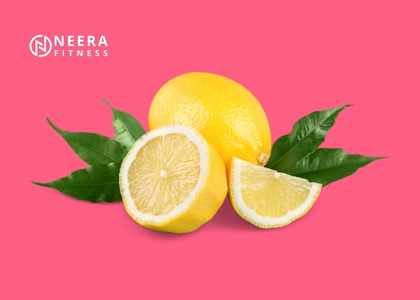
If you have a taste for tart fruits, then the lemon might be just what you’re looking for. This yellow citrus fruit, originating from Asia, boasts juicy flesh with a tangy flavor, surrounded by a thick yellow skin.
Lemons are a popular fruit in cooking and are widely used in various recipes that require a squeeze of fresh lemon juice.
Additionally, the high concentration of citric acid in lemons makes them useful for cleaning purposes.
Lemon-based food products such as lemon cakes, lemon juice, lemon jam, and lemon tea are readily available, making it easy to incorporate this fruit into your diet.
Nutritionally speaking, lemons are a rich source of vitamin C and provide various vitamins and minerals per standard-sized fruit (27).
- Calories: 25.8 kcal
- Carbohydrate: 25.4 grams
- Fiber: 1.6 grams
- Sugar: 1.5 grams
- Fat: 0.2 grams
- Protein: 0.6 grams
- Vitamin C: 51% of the RDI
- Calcium: 2% of the RDI
- Potassium: 2% of the RDI
- Vitamin B1: 2% of the RDI
- Vitamin B6: 2% of the RDI
27. Lime
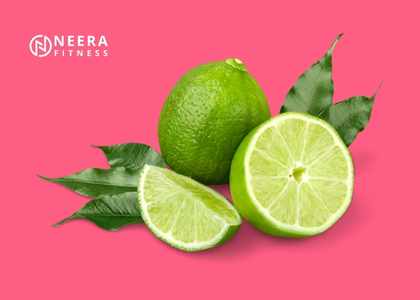
Limes are a sour citrus fruit that closely resembles lemons. Although they share many similarities, they have slightly different tastes – while lemons are tarter, limes have a bitter flavor.
The appearance of the flesh of both fruits is similar, with the only difference being the color. Nutrient-wise, they are fairly similar, with a similar range of vitamins and minerals.
Lime species are believed to have originated in Southeast Asia and Indonesia, with several different types available.
Like lemons, limes are often used for flavor in drinks, cocktails, and teas. One medium-sized lime provides (28):
- Calories: 31.3 kcal
- Carbohydrate: 7.1 grams
- Fiber: 1.9 grams
- Sugar: 1.1 grams
- Fat: 0.1 grams
- Protein: 0.5 grams
- Vitamin C: 32% of the RDI
- Potassium: 2% of the RDI
- Calcium: 2% of the RDI
- Iron: 2% of the RDI
- Copper: 2% of the RDI
28. Longan Fruit
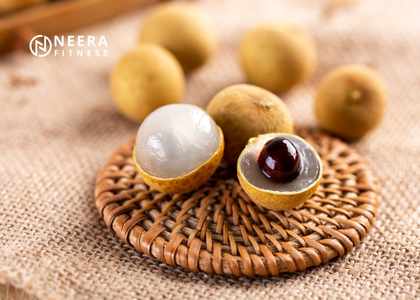
The Longan is a tropical fruit that is part of the soapberry family, which also includes the well-known lychee and rambutan.
This fruit is often referred to as the “dragon’s eye” in China, where it may have originated, due to its distinctive appearance.
Longans have white flesh with a large black seed encased in olive-brown skin.
They have a soft and smooth texture and are incredibly juicy. With a sweet flavor, they are frequently used in Asian cuisine.
In terms of nutrition, a 100g serving of longans provides (29):
- Calories: 60 kcal
- Carbohydrate: 15.1 grams
- Fiber: 11.1 grams
- Fat: 0.1 grams
- Protein: 0.3 grams
- Vitamin C: 14% of the RDI
- Potassium: 8% of the RDI
- Copper: 8% of the RDI
- Vitamin B2: 8% of the RDI
- Manganese: 3% of the RDI
29. Lychee

The lychee is a tropical fruit that shares similarities with both the longan and rambutan.
The flesh, flavor, and nutritional content of the lychee are similar to that of the other two fruits.
However, the lychee stands out with its distinct red-purple textured skin, while the longan has a light brown peel that resembles potato skin.
When it comes to taste, the lychee is slightly sweeter than the longan fruit but not as much as the rambutan. This fruit has a rich history dating back to the 11th century, originating in Guangdong, China.
Like the other members of the soapberry family, lychee is a great source of vitamin C.
Here’s the complete nutritional profile of lychees per 100g (30):
- Calories: 66 kcal
- Carbohydrate: 16.5 grams
- Fiber: 1.3 grams
- Sugar: 15.2 grams
- Fat: 0.4 grams
- Protein: 0.8 grams
- Vitamin C: 119% of the RDI
- Copper: 7% of the RDI
- Vitamin B6: 5% of the RDI
- Potassium: 5% of the RDI
- Vitamin B2: 4% of the RDI
30. Mango

Mangoes, sometimes referred to as the “king of fruits,” are tropical fruit known for their sweet and juicy flesh. Originating from South Asia, they are commonly found in countries like India, the Philippines, and Thailand.
The fruit is composed of a stone encased in sweet yellow flesh, which has a slightly sweet, soft, and tangy flavor. Typically, mangoes are consumed raw, but they are also used in many smoothie and dessert recipes.
Due to their high carbohydrate and sugar content, mangoes are known for their sweet taste.
A single cup (165g) serving of mangoes contains (31):
- Calories: 107 kcal
- Carbohydrate: 28.1 grams
- Fiber: 3.0 grams
- Sugar: 24.4 grams
- Fat: 0.4 grams
- Protein: 0.8 grams
- Vitamin C: 76% of the RDI
- Vitamin A: 25% of the RDI
- Vitamin B6: 11% of the RDI
- Copper: 9% of the RDI
- Vitamin E: 9% of the RDI
31. Melon

Melons, another sweet fruit, are often a favorite during the summer season for their juicy and refreshing taste.
Interestingly, melons belong to the berry family, despite not having a similar appearance to fruits like strawberries and blueberries.
Melons come in a variety of species and are native to Africa and South West Asia.
A single serving of one cup of diced honeydew melon (170g) offers the following nutrients (32):
- Calories: 61.2 kcal
- Carbohydrate: 15.5 grams
- Fiber: 1.4 grams
- Sugar: 13.8 grams
- Fat: 0.2 grams
- Protein: 0.9 grams
- Vitamin C: 51% of the RDI
- Potassium: 11% of the RDI
- Folate: 8% of the RDI
- Vitamin B6: 7% of the RDI
- Vitamin K: 6% of the RDI
32. Mulberry
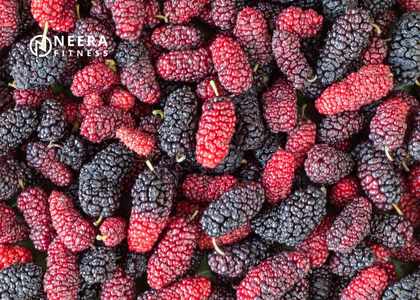
Mulberries are a widely popular type of berry that comes in various shapes and sizes and can be found all over the world.
There are three main varieties of mulberries: black, red, and white. Black and red mulberries are native to the United States, while white mulberries are mostly found in China.
Mulberries are commonly consumed fresh or dried, and they are both sweet and juicy with a slightly tart flavor in the case of the black and red varieties.
However, the white variety of mulberries is usually only available in dried form and is much sweeter than the other two varieties, and much smaller in size as well.
Here is the nutritional profile of raw mulberries per cup (140g) (33):
- Calories: 60.2 kcal
- Carbohydrate: 13.7 grams
- Fiber: 2.4 grams
- Sugar: 11.3 grams
- Fat: 0.5 grams
- Protein: 2.0 grams
- Vitamin C: 85% of the RDI
- Vitamin K: 14% of the RDI
- Iron: 14% of the RDI
- Potassium: 8% of the RDI
- Vitamin B2: 8% of the RDI
33. Nectarines
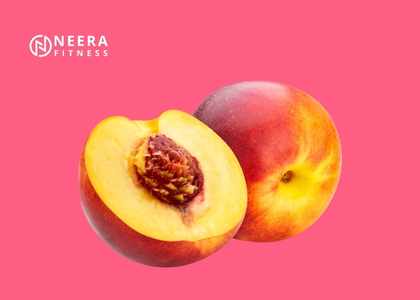
Nectarines are a juicy and sweet summer fruit, related to peaches.
They contain a high amount of water, making them a refreshing option during the warmer months.
The nutritional content of one typical nectarine is as follows (34):
- Calories: 63 kcal
- Carbohydrate: 15.1 grams
- Fiber: 2.4 grams
- Sugar: 11.2 grams
- Fat: 0.45 grams
- Protein: 1.5 grams
34. Olives

Olives are often thought of as a vegetable, but in fact, they are a type of fruit. With a unique taste that can range from bitter and salty to slightly sweet, olives are enjoyed for their flavor as well as their health benefits.
They are a rich source of polyphenols and healthy fats.
Olives have been grown for millions of years in Italy and have since spread throughout the Mediterranean region and the world.
There are thousands of different olive species, from “green” and “black” olives to many more. People consume olives as a snack, in cooking, or for making olive oil.
A 100g serving of olives contains (35):
- Calories: 81 kcal
- Carbohydrate: 5.6 grams
- Fiber: 2.5 grams
- Sugar: 0 grams
- Fat: 6.9 grams
- Protein: 1.0 grams
- Sodium: 37% of the RDI
- Iron: 18% of the RDI
- Copper: 11% of the RDI
- Vitamin E: 8% of the RDI
- Vitamin A: 7% of the RDI
35. Orange

Oranges are a staple fruit found all over the world.
Contrary to popular belief, oranges are actually a hybrid fruit, created from the combination of pomelo and mandarin.
These citrus fruits have a tough outer peel and sweet and slightly sour flesh inside. There are numerous varieties of oranges, each with varying levels of sweetness, bitterness, and sourness. The sweet, edible oranges that we typically see in stores and in juice form are the most popular.
Oranges are a good source of carbohydrates and provide a decent amount of vitamin C.
A single large orange contains (36):
- Calories: 86.5 kcal
- Carbohydrate: 78.8 grams
- Fiber: 4.4 grams
- Sugar: 17.2 grams
- Fat: 0.2 grams
- Protein: 1.7 grams
- Vitamin C: 163% of the RDI
- Folate: 14% of the RDI
- Vitamin B1: 11% of the RDI
- Potassium: 10% of the RDI
- Vitamin A: 8% of the RDI
36. Papaya

Papayas, with their exotic name, are tropical fruit that hails from Central America. Due to the global fruit trade, they are now easily accessible in many countries.
The papaya has a smooth exterior and soft, reddish-orange flesh inside. Its striking appearance resembles a combination of a giant pear and butternut squash.
Its flavor is comparable to mangoes but less sweet.
Like other brightly colored fruits, papayas are rich in polyphenols and offer a wealth of nutrients per cup, which is approximately 140 grams, such as (37):
- Calories: 54.6 kcal
- Carbohydrate: 13.7 grams
- Fiber: 2.5 grams
- Sugar: 8.3 grams
- Fat: 0.2 grams
- Protein: 0.9 grams
- Vitamin C: 144% of the RDI
- Vitamin A: 31% of the RDI
- Folate: 13% of the RDI
- Potassium: 10% of the RDI
- Vitamin E: 5% of the RDI
37. Passion Fruit
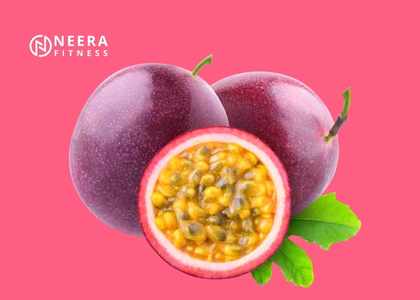
Passion fruit is a tropical berry that originated in South America in the regions of Brazil, Paraguay, and Argentina.
Today, it is grown in various tropical and subtropical regions all over the world.
Passion fruit is unique, having a round and hard outer shell that encases a yellow, juicy, and sweet flesh filled with edible seeds.
There are various varieties of passion fruit, including small golf-ball-sized ones and large grapefruit-sized ones like the ‘golden passion fruit’.
Although passion fruit is a higher-carb fruit, about half of these carbs come from fiber.
A serving of 5 passion fruits provides valuable nutrients to the body (38).
- Calories: 88 kcal
- Carbohydrate: 21 g
- Fiber: 9.5 g
- Sugar: 2.0 g
- Fat: 0.1 g
- Protein: 0.4 g
- Vitamin C: 45% RDA
- Vitamin A: 25% RDA
- Potassium: 10% RDA
- Iron: 10% RDA
- Phosphorus: 5% RDA
38. Pear
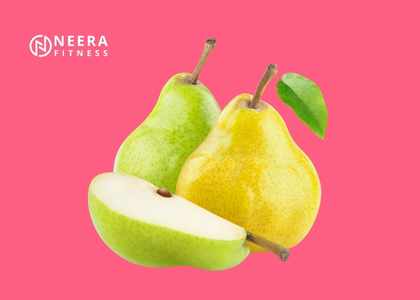
Pears are a popular fruit known for their sweet and juicy flavor. They have been grown all around the world, with their origin believed to be in China.
There are numerous varieties of pears, ranging from the classic European “pear-shaped” species to the large and round Chinese/Korean pears.
Despite the differences in appearance, all pears have thin, crisp skin and sweet, juicy white flesh.
The flavor of pears is a unique combination of sweetness like apples, mixed with a mild citrus taste and aroma.
When bitten, the flesh is crunchy and juicy due to its high water content, which is around 84% by weight, making it one of the fruits with the highest water content.
Pears offer a good range of vitamins and minerals but are not particularly high in any specific nutrient.
A medium-sized pear provides the following nutritional content (39):
- Calories: 103 kcal
- Carbohydrate: 27.5 grams
- Fiber: 5.5 grams
- Sugar: 17.4 grams
- Fat: 0.2 grams
- Protein: 0.7 grams
- Vitamin C: 14% of the RDI
- Vitamin K: 10% of the RDI
- Copper: 7% of the RDI
- Potassium: 6% of the RDI
- Manganese: 4% of the RDI
39. Persimmon
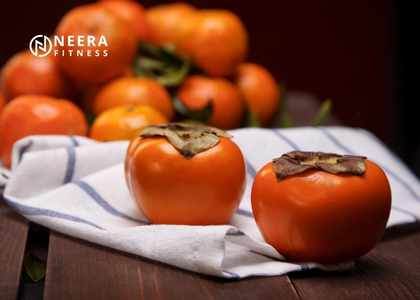
Persimmons are a widely available fruit that has their origins in East Asia, particularly in China, Japan, and Korea. They are known for their brilliant bright orange color and come in two different varieties.
The first variety, the fuyu persimmon, is shaped like a wide tomato and has crisp, sweet, and crunchy flesh. On the other hand, the Hachiya persimmon has a rounder, taller shape and a firm, solid feel.
This variety tastes extremely bitter when fresh and therefore, should not be eaten until it is fully ripe.
When ripe, the fruit becomes soft, and squeezing it should feel like there is a lot of water inside. It is usually eaten with a spoon due to its soft texture.
Persimmons are a good source of vitamin A in the form of beta-carotene. One persimmon provides (40):
- Calories: 118 kcal
- Carbohydrate: 31.2 grams
- Fiber: 6 grams
- Sugar: 21 grams
- Fat: 0.3 grams
- Protein: 1.0 grams
- Vitamin A: 55% of the RDI
- Manganese: 30% of the RDI
- Vitamin C: 21% of the RDI
- Copper: 9% of the RDI
- Vitamin B6: 8% of the RDI
40. Pineapple
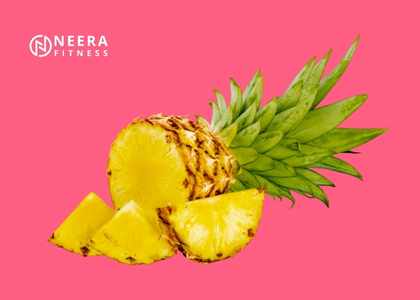
The sweet and slightly sour Pineapple is a tropical fruit that has its origin in South America.
It has become widely available in various tropical regions across the world, such as the Philippines and the Caribbean.
The flesh of the pineapple is firm and yellow, providing a juicy and sweet flavor. Its versatility in cooking makes it a popular ingredient in various dishes, including juices, smoothies, desserts, and even pizzas.
Pineapples are packed with vitamin C and contain a significant amount of the mineral manganese.
A serving of one cup (165g) of pineapple provides the following nutrients (41):
- Calories: 82.5 kcal
- Carbohydrate: 21.6 grams
- Fiber: 2.3 grams
- Sugar: 16.3 grams
- Fat: 0.2 grams
- Protein: 0.9 grams
- Vitamin C: 131% of the RDI
- Manganese: 76% of the RDI
- Vitamin B1: 9% of the RDI
- Vitamin B6: 9% of the RDI
- Copper: 9% of the RDI
41. Plum
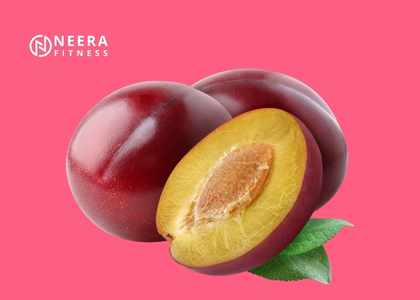
Plums are small, round purple fruits originating from China.
Their dark purple skin envelops juicy flesh that can range in color from yellow-orange to reddish-purple.
Plums can be consumed either fresh or in their dried form, commonly known as a ‘prune’.
The taste of plums varies based on the variety and degree of ripeness, with ripe plums being sweet and unripe plums having a tart flavor.
Plums are known to be rich in polyphenols, and studies suggest they may help protect against bone loss (42).
Here is the nutritional information for one plum (43):
- Calories: 30.4 kcal
- Carbohydrate: 7.5 grams
- Fiber: 0.9 grams
- Sugar: 6.5 grams
- Fat: 0.2 grams
- Protein: 0.5 grams
- Vitamin C: 10% of the RDI
- Vitamin A: 5% of the RDI
- Vitamin K: 5% of the RDI
- Potassium: 3% of the RDI
- Copper: 2% of the RDI
42. Pomegranate

Pomegranates have a unique appearance and taste and are believed to have originated in India to the Middle East region.
They have been cultivated for centuries in the Middle East and Mediterranean, and are now grown in many dry and hot regions around the world.
The pomegranate has a thick, firm red skin and is filled with hundreds of red edible seeds, known as arils, which are separated into different chambers by a white stringy material called albedo.
Pomegranates are nutritious fruit that is high in fiber, vitamins, and minerals.
One pomegranate offers a range of health benefits (44):
- Calories: 234 kcal
- Carbohydrate: 52.7 grams
- Fiber: 11.3 grams
- Sugar: 38.5 grams
- Fat: 3.3 grams
- Protein: 4.7 grams
- Vitamin C: 58% of the RDI
- Potassium: 48% of the RDI
- Manganese: 27% of the RDI
- Vitamin B6: 22% of the RDI
- Vitamin B2: 19% of the RDI
43. Pomelo

Pomelo is a large citrus fruit that is native to Southeast Asia and is believed to have originated in the region of Malaysia.
It is one of the largest citrus fruits and is known for its high vitamin C content, making it a great addition to any healthy diet.
The exterior of the pomelo is covered in a thick and tough yellow-green rind, while the inside of the fruit is filled with juicy white flesh that is separated into different sections.
The flesh of the pomelo is sweet, with a slightly bitter taste, and is packed with essential vitamins and minerals.
In terms of nutritional content, a single pomelo fruit typically weighs around 609 grams (45):
- Calories: 231 kcal
- Carbohydrates: 58.6 grams
- Fiber: 6.09 grams
- Fat: 0.24 grams
- Protein: 4.63 grams
44. Rambutan
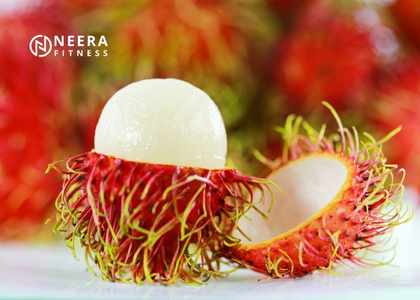
Rambutan, a fruit native to the tropical regions in South-East Asia such as Malaysia and Indonesia, is known for its strange appearance.
Its bright red outer skin is covered with red and green spiky hairs, giving it an otherworldly appearance.
The skin of the rambutan may feel dry and leathery, but the inside is comprised of soft, white, and round flesh that contains a large seed in the middle.
The taste of rambutan is similar to that of lychee, but it is sweeter and slightly less juicy.
Nutritionally, rambutan is a good source of vitamins and minerals.
A 100g serving of rambutan provides (46, 47):
- Calories: 68 kcal
- Carbohydrate: 16 grams
- Fiber: 2.8 grams
- Sugar: 13.2 grams
- Fat: 0.3 grams
- Protein: 0.9 grams
- Vitamin C: 66% of the RDI
- Manganese: 10% of the RDI
- Copper: 9% of the RDI
- Potassium: 5% of the RDI
- Magnesium: 4% of the RDI
45. Raspberry
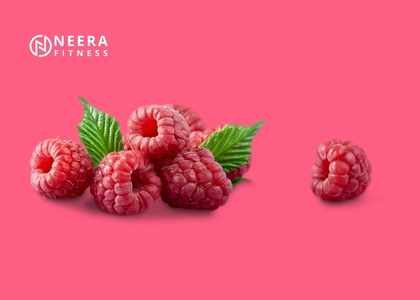
Raspberries are a widely cultivated fruit that is grown in temperate regions around the world. With numerous cultivars available, the appearance of raspberries may vary from one country to another.
These small, juicy berries grow on raspberry bushes and are made up of many individual drupelets.
The flesh of raspberry is soft and provides a sweet taste with a juicy texture.
Raspberries are a rich source of polyphenols and also contain high amounts of vitamin C and manganese.
One cup of raspberries, weighing 123g, offers the following nutrients (48):
- Calories: 64 kcal
- Carbohydrate: 14.7 grams
- Fiber: 8.0 grams
- Sugar: 5.4 grams
- Fat: 0.8 grams
- Protein: 1.5 grams
- Vitamin C: 54% of the RDI
- Manganese: 41% of the RDI
- Vitamin K: 12% of the RDI
- Magnesium: 7% of the RDI
- Folate: 6% of the RDI
46. Redberries
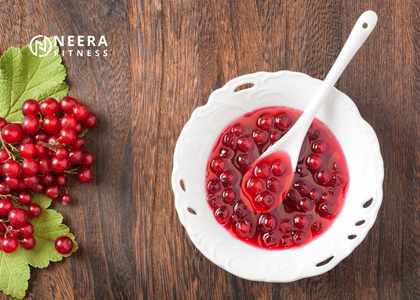
Lingonberries, also known as redberries, mountain cranberries, red whortleberries, cowberries, and foxberries, are tart fruit found across Europe and North America.
They have a red color and are often used in sweetened jams, juices, and desserts due to their tart taste.
A cup of lingonberries provides the following nutritional benefits (49):
- Calories: 71 kcal
- Carbohydrate: 16.3 grams
- Fiber: 3.7 grams
- Sugar: 8.3 grams
- Fat: 0.5 grams
- Protein: 1.1 grams
- Vitamin C: 72% of the RDI
- Iron: 4% of the RDI
- Calcium: 3% of the RDI
- Vitamin A: 3% of the RDI
47. Starfruit

Starfruit is a visually stunning fruit with a unique appearance. When sliced, each piece is shaped like a bright yellow star. It is commonly found in tropical regions of South and Southeast Asia.
The fruit has a sweet and slightly tart flavor and a firm flesh that ranges from green to a deep yellow color when fully ripe.
Starfruit is also a great source of hydration as it contains over 90% water by weight.
However, it is important to note that starfruit can be dangerous for people with kidney problems and should not be consumed by those with chronic kidney disease (50).
Despite this, the fruit has a healthy nutrient profile and offers a range of nutritional benefits.
The specific nutritional information for one starfruit is as follows (51):
- Calories: 28.2 kcal
- Carbohydrate: 6.2 grams
- Fiber: 2.5 grams
- Sugar: 3.6 grams
- Fat: 0.3 grams
- Protein: 0.9 grams
- Vitamin C: 52% of the RDI
- Copper: 6% of the RDI
- Vitamin B5: 4% of the RDI
- Folate: 3% of the RDI
- Potassium: 3% of the RDI
48. Strawberry

The strawberry is a beloved fruit that is widely enjoyed all over the world. Despite being commonly referred to as a berry, strawberries are actually an accessory fruit.
They have a soft and sweet taste, making them ideal for eating fresh, with cream, or in various desserts.
In addition to their taste, strawberries are known for their sweet aroma. This has led to their popularity in other products such as candy, soaps, creams, lip balms, and many more.
Strawberries are not only delicious but also provide a high level of nutrition.
They are an excellent source of vitamin C and offer many other essential vitamins and minerals.
A single cup (152g) of strawberries contains (52):
- Calories: 48.6 kcal
- Carbohydrate: 11.7 grams
- Fiber: 3 grams
- Sugar: 7.4 grams
- Fat: 0.5 grams
- Protein: 01.0 grams
- Vitamin C: 149% of the RDI
- Manganese: 29% of the RDI
- Folate: 9% of the RDI
- Potassium: 7% of the RDI
- Magnesium: 5% of the RDI
49. Tangerine
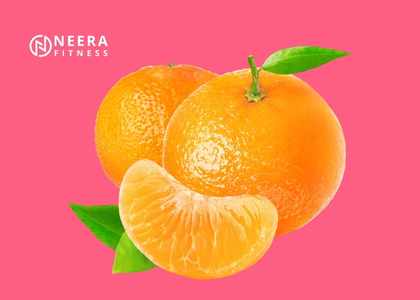
Tangerines, known for their sweet and flavorful taste, are a smaller and flatter version of oranges.
They have softer skin, making them an easy and convenient snack.
With high levels of vitamin C and small amounts of other micronutrients, tangerines offer a nutritious option for on-the-go snacking.
A medium-sized tangerine provides the following nutritional benefits (53):
- Calories: 46.6 kcal
- Carbohydrate: 11.7 grams
- Fiber: 2.8 grams
- Sugar: 21.8 grams
- Fat: 0.3 grams
- Protein: 0.7 grams
- Vitamin C: 39% of the RDI
- Vitamin A: 12% of the RDI
- Potassium: 4% of the RDI
- Folate: 4% of the RDI
- Calcium: 3% of the RDI
50. Watermelon

Watermelons are a fruit that originated in Southern Africa and grow in tropical and subtropical regions.
They are known for their high water content, with 91.5% of the fruit being composed of water.
Watermelons can vary greatly in size, with some weighing only a few kilograms, while others can reach massive proportions.
In fact, the largest watermelon on record weighed 159 kg (351 pounds) and was grown in Tennessee.
In terms of taste, watermelons are sweet and juicy, making them a refreshing summer fruit.
They also provide a significant source of vitamins and minerals, with a one-cup (154g) serving offering (54):
- Calories: 46.2 kcal
- Carbohydrate: 11.6 grams
- Fiber: 0.6 grams
- Sugar: 9.5 grams
- Fat: 0.2 grams
- Protein: 0.9 grams
- Vitamin C: 21% of the RDI
- Vitamin A: 18% of the RDI
- Potassium: 5% of the RDI
- Magnesium: 4% of the RDI
- Vitamin B5: 3% of the RDI
Conclusion
There are a vast array of different fruits that can provide us with a wide range of nutritional benefits.
These 50 types of fruits, ranging from apples to watermelons, each have their own unique taste, texture, and appearance, and can play a vital role in maintaining a healthy and balanced diet.
Whether you are looking to increase your intake of vitamins and minerals, boost your immunity with antioxidants, or simply satisfy your sweet tooth, there is a fruit out there for everyone.
It’s important to remember to vary the fruits you consume, as different types of fruit provide different types of nutrition, and this will help to ensure that you receive the full range of nutrients that your body needs to function optimally.














